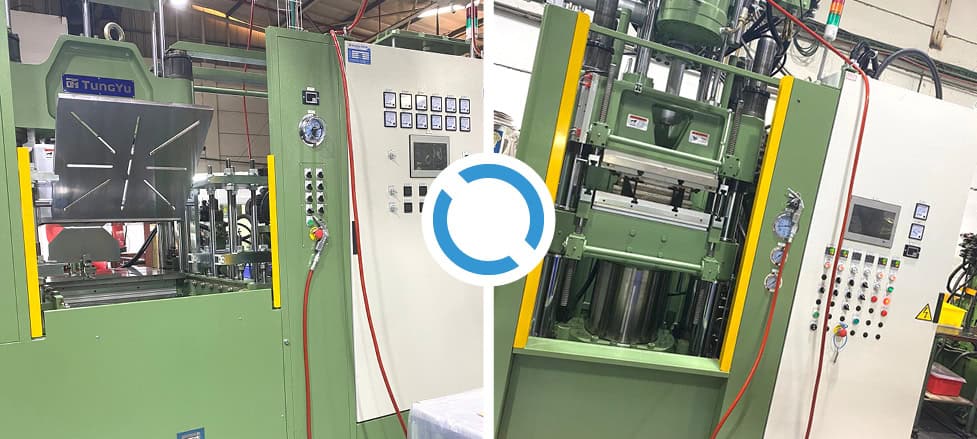Silicone rubber is a highly versatile material known for its elasticity, durability, and resistance to extreme temperatures, making it an essential component across multiple industries. Two primary types of silicone rubber are used in various applications: Solid Silicone and Liquid Silicone. Each type has unique characteristics that make it suitable for specific purposes. This article delves into the key differences between solid silicone and liquid silicone, their respective applications, and how they are used in different industries.
What is Solid Silicone?
Solid silicone is exactly what its name suggests—a solid material molded and cured into the desired shape. It is created by mixing silicone elastomers with catalysts and other additives before it is molded or extruded. Solid silicone is known for its:
– High tear strength
– Excellent tensile strength
These characteristics make solid silicone ideal for applications requiring a durable and long-lasting product, particularly in industries where environmental factors such as extreme temperatures and harsh conditions come into play.
Key Applications of Solid Silicone
Industrial and Mechanical Applications
Solid silicone rubber plays a crucial role in industrial and mechanical applications, such as aviation. Its durability, resistance to extreme temperatures, and ability to withstand harsh environmental conditions make it ideal for:
– Sealing components
– Insulation
– Protective parts in high-performance machinery
Healthcare Industry
In the healthcare industry, solid silicone is frequently used for its biocompatibility, meaning it is safe for contact with the human body. Its ability to resist bacteria and withstand sterilization processes makes it suitable for:
– Medical devices
– Implants
– Prosthetics
For example, medical-grade silicone is used to manufacture surgical implants and device components that demand both longevity and safety. Additionally, solid silicone is favored in medical device interfaces, such as keyboard buttons, for its resistance to abrasion.
What is Liquid Silicone?
Liquid silicone, or Liquid Silicone Rubber (LSR), is a two-part material made up of a liquid silicone matrix and a catalyst. Unlike solid silicone, which is cured by heat or a chemical reaction, liquid silicone cures through a specialized injection molding process, enabling the creation of intricate and complex shapes.
Key Properties of Liquid Silicone
– Fluidity
– Short cure time
– High production efficiency
The low viscosity of liquid silicone allows it to fill molds easily, which is essential for high-volume manufacturing of complex parts. This efficiency, combined with its ability to create precise, detailed designs, has made liquid silicone a popular choice in industries like electronics, consumer goods, and baby products.
Key Applications of Liquid Silicone
Consumer Goods
Liquid silicone is increasingly being used to create products such as:
– Baby bottles
– Pacifiers
– Kitchen utensils
These products benefit from liquid silicone’s food-grade safety and chemical resistance, making them ideal for direct contact with food or the human body.
Medical Technology
Liquid Silicone Rubber (LSR) is particularly valuable in medical technology due to its biocompatibility and ability to withstand sterilization processes. Its flexibility and flow properties make it ideal for producing complex medical components like:
– Seals and closures for medical equipment
– Catheters
– Wearable medical devices
Liquid silicone’s durability and ease of sterilization ensure it is a preferred material in critical medical devices.
Comparing Solid Silicone and Liquid Silicone
While both solid silicone and liquid silicone have many overlapping properties, including high-temperature resistance and chemical durability, there are significant differences in how these materials are processed and used.
- Manufacturing Process
– Solid Silicone is molded by mixing raw material with catalysts and then cured in a mold through compression molding or extrusion. It requires manual processes, including cutting and feeding the raw materials.
Liquid Silicone undergoes injection molding, a more automated and efficient process. It flows easily into molds.
- Flexibility and Precision
Liquid silicone’s low viscosity enables the production of highly intricate and detailed parts, whereas solid silicone is better suited for larger, more durable components. For this reason, liquid silicone is often used in applications requiring high precision and detail, such as micro-molding for medical devices.
- Environmental Safety
Both types of silicone rubber are known for their environmental friendliness, but liquid silicone is particularly noted for its food-grade safety and lack of additives like vulcanizing agents, making it a top choice for products that come into contact with food or skin. - Transparency and Color
Liquid silicone products tend to be highly transparent and color-stable, making them ideal for aesthetic applications, such as consumer goods or medical products that require visibility. On the other hand, solid silicone products have lower transparency and often contain vulcanizing agents, which can affect their final appearance and aroma.
How to Choose Between Solid Silicone and Liquid Silicone
When selecting between solid silicone and liquid silicone, the right choice depends on several factors, including:
– Design complexity
– Production volume
– Required safety standards
– Durability needs
For high-precision parts or high-volume manufacturing, liquid silicone is often the better choice due to its faster production times and ability to mold complex shapes. Solid silicone, on the other hand, is ideal for heavy-duty applications requiring robustness and long-term reliability, such as medical implants.
Conclusion
Both solid silicone and liquid silicone have unique properties that make them indispensable in various industries, from aviation to healthcare. Understanding the differences between these two types of silicone rubber is crucial for choosing the right material for specific applications. Whether you’re looking for the durability of solid silicone or the design flexibility of liquid silicone, each material offers a range of solutions to meet the diverse needs of modern industries.
Looking for the perfect silicone solution for your industry? Whether you need the strength of solid silicone or the flexibility of liquid silicone, Techno Ad has you covered. Contact us today to discuss your specific requirements and find the right material to optimize your products. Let’s work together to enhance performance and durability in your applications!

